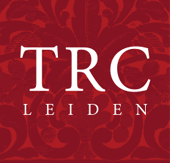An essential feature in the production of velvet is the range of raw materials that are being used. Over the centuries these have changed dramatically. Not surprisingly, the late eighteenth century and the Industrial Revolution were to play an important role in the production of velvet.
Fibres
Before the Industrial Revolution of the eighteenth and nineteenth centuries, velvet was normally made from either silk or, less commonly, wool or mohair (especially in the Netherlands). In addition, some cotton and linen versions were produced. The most popular form, however, remained silk velvet. The silk for European versions came from China, Iran, Syria, as well as (but to a lesser extent) Egypt, Sicily, Italy and Spain. Later the French sericulture industry developed to such an extent that their velvet industry was significantly supplied by locally produced silk.
During the twentieth century velvets came to be made from acetate, nylon, polyester, viscose or a mixture of artificial, synthetic and natural fibres. Examples made from mixed cotton and bamboo fibres have recently become available. Sometimes spandex is added to the thread in order to give it a stretch – hence the term ‘stretch velvet’.
Dyes
One of the most expensive elements of a velvet was the dye used to create the various colours. These tended to be restricted in number. In order to create the best textiles, the fibres were first dyed, then spun and only then woven, rather than dyeing a finished piece of cloth.
Blues were created using indigo (Indigofera sp.) or woad (Isatis tinctorium), while yellows were made from fustic (Cotinus coggygria), Persian berries (Rhamnus family) or weld (Reseda luteola). Purples were produced using some types of lichens. But it was the red dyes that provided the widest range of colours, and these reflected dramatic developments that took place at the end of the 15th century, namely the opening up of the Americas to European traders and merchants.
Prior to the early sixteenth century, most red dyes were produced from madder (Rubia tinctorum), and to a lesser extent, redwood (Caesalpina sp.), or from European insect dyes, notably kermes (Kermes family, especially Kermes vermillio), which was known as grana in Italian and grain in English. Other insect dyestuffs included Polish lac (Porphyrophora polonica) and Armenian lac (Porphyrophora hamelii (Brandt)). The insect dyes produced the better colours and were far more expensive than those based on madder. But they were also more difficult to dye with.
But a major change in the red dyestuffs took place in the early 16th century with the introduction of New World cochineal (Dactylopius coccus). The first documented cargo of cochineal sent to Spain dates to 1523. Cochineal was soon imported on such a large scale that the price of some velvets actually came down, albeit only slightly. The red that was produced became known as ‘Crimson’ and was highly valued.


